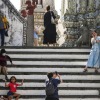The former imperial city of Hue in central Vietnam offers an array of very different experiences that can be enjoyed in a single day, from dawn to dusk.
Dawn on Chuon Lagoon
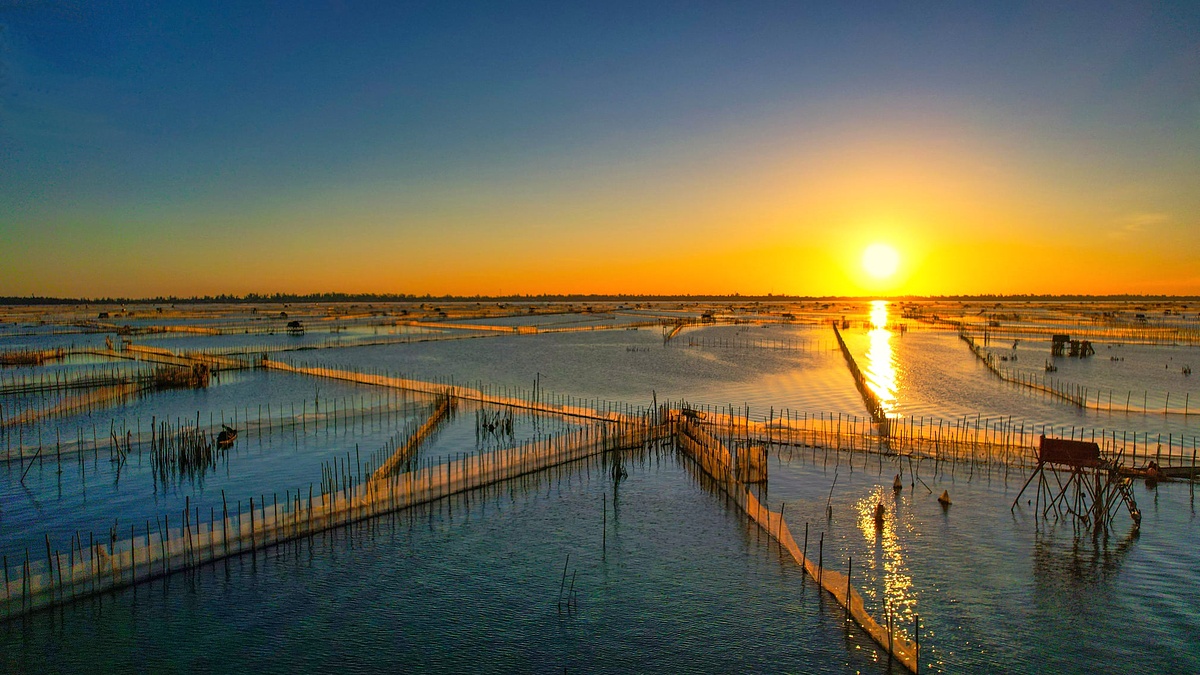 |
|
Chuon Lagoon at dawn in Hue. Photo by VnExpress/Duc Hieu |
Watching the sun come up on Chuon Lagoon, a community-based ecotourism site in Thua Thien-Hue Province’s Phu Vang District, is an experience to remember.
The site is part of the Tam Giang – Cau Hai wetland nature reserve.
From downtown Hue, the An Truyen Street leads to the lagoon. Getting there early on a motorbike is rewarding, not just for the beautiful sunrise, but the sightseeing experience en route.
Chuon Lagoon is at its busiest at dawn as fishermen’s boats crowd the lagoon after an overnight fishing voyage. They start fishing at 6 p.m. and finish at 6 a.m. and bring their catch to a wholesale market in Chuon Village.
Visitors can rent a boat from local fishermen for VND200,000-250,000 ($8.76-10.95) each trip for four to six people and go around the lagoon. The Chuon Village market where fresh seafood is sold is also worth visiting early morning. A breakfast of hot porridge with steamed pork belly and turmeric noodles with fried intestines is highly recommended.
Look like a princess
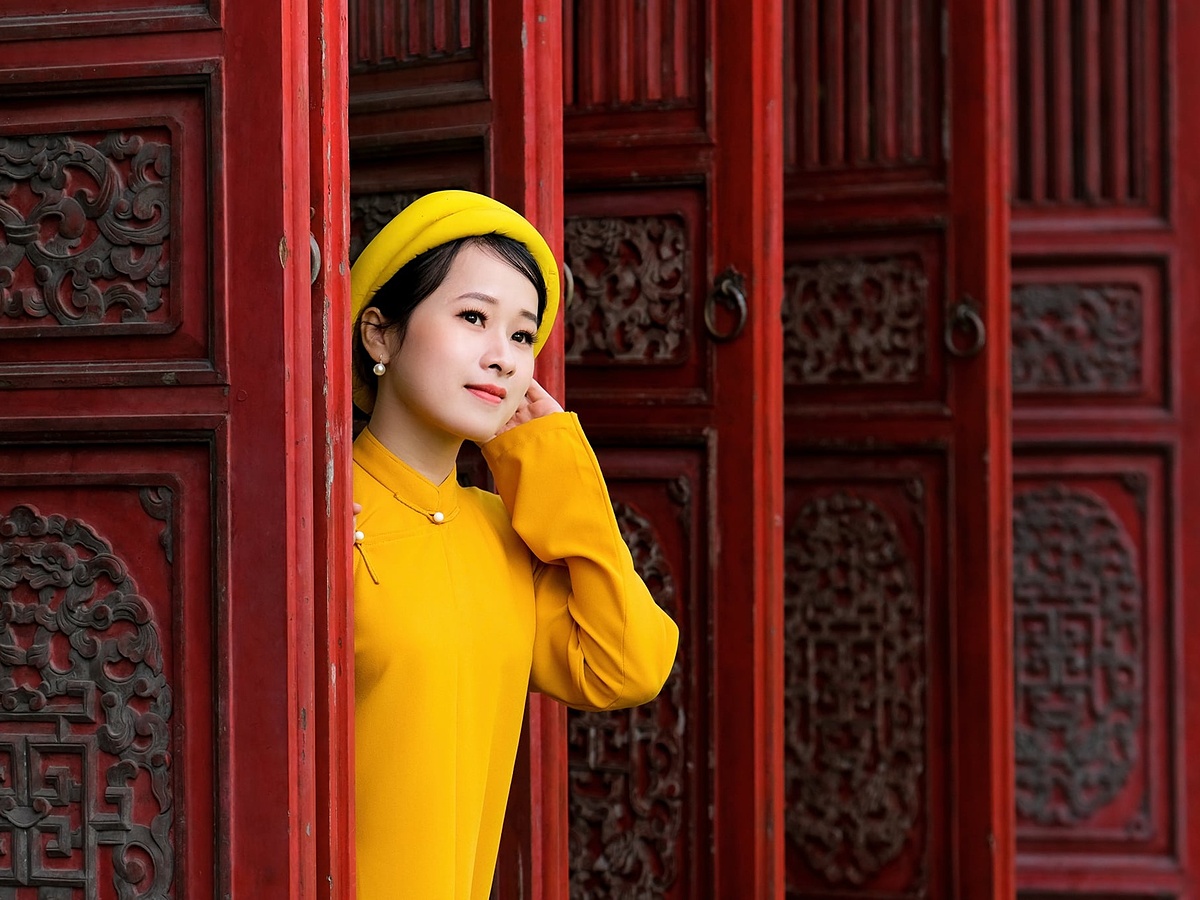 |
|
A woman wearing nhat binh dress takes photos inside the Imperial Citadel in downtown Hue. Photo by VnExpress/Duc Hieu |
Hue used to be the seat of Nguyen Dynasty, Vietnam’s last ruling royal family that reigned from 1802 until 1945. The Hue Citadel, a UNESCO heritage site built in 1805, offers the opportunity for visitors to don royal robes and have memorable pictures taken. They can rent traditional ao dai (Vietnamese long dress) or nhat binh, 19th-century dresses designed for a Vietnamese princess and have attractive photographs taken inside the citadel.
In fact this practice has become so popular that there are many vintage clothing renting services in Hue.
Tickets to the Imperial Citadel cost VND200,000 for adults and VND40,000 for children.
King Gia Long’s tomb
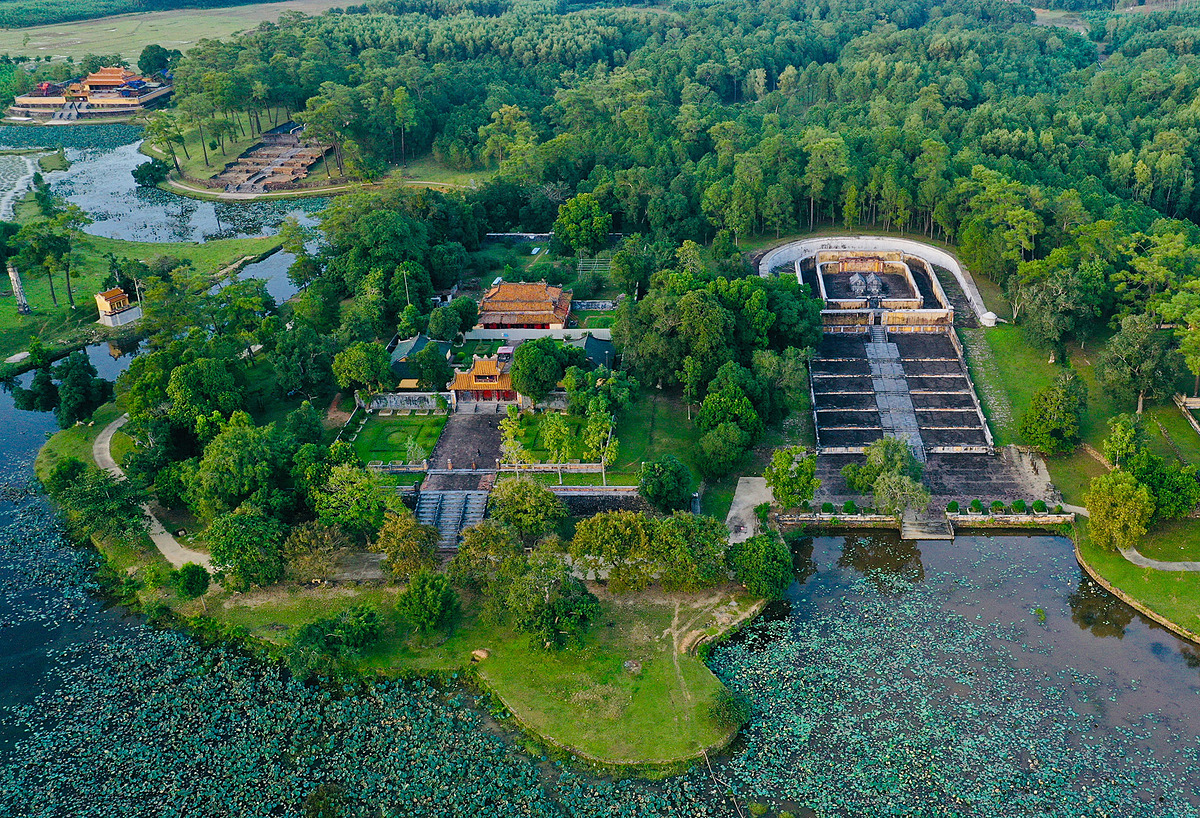 |
|
The tomb of King Gia Long is seen from above. Photo by VnExpress/Vo Thanh |
Gia Long founded the Nguyen Dynasty that ruled the country for more than a century. A visit to his tomb in the former imperial city, therefore, is not to be missed. The mausoleum is in Dinh Mon Village, Huong Tra District on the west bank of the Huong (Perfume River), around 20 kilometers from downtown Hue.
The tomb of King Gia Long is somewhat remote from the Imperial Citadel and tourists can only reach it taking a boat along the Perfume River.
The site is surrounded by greenery and lotus ponds that enhance the quietness of the place with their beauty.
The king is buried beside Queen Thua Thien Cao who supported him through many trials and tribulations.
Due to its secluded location, the tomb of King Gia Long is often overlooked by tourists.
Tu Hieu Pagoda
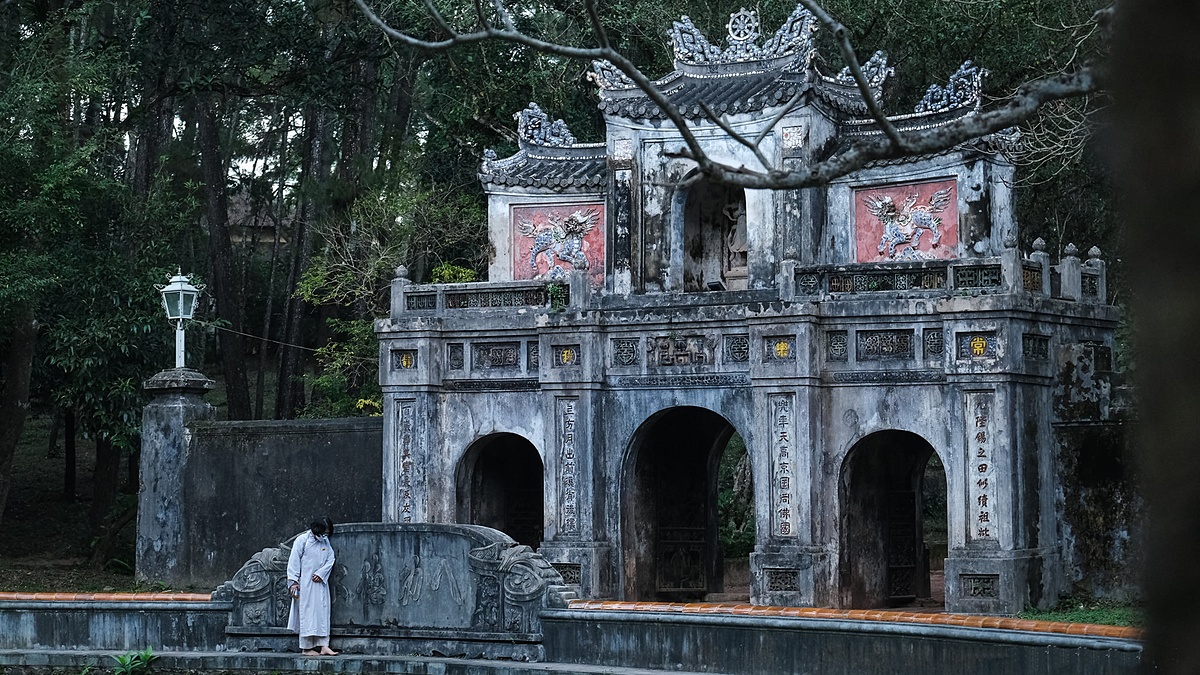 |
|
A Buddhist prayer walks inside Tu Hieu Pagoda in Hue. Photo by VnExpress/Duc Hieu |
The Tu Hieu Pagoda on Le Ngo Cat Street, six kilometers from downtown Hue, has achieved fame as the place where Thich Nhat Hanh’s journey to become a world renowned apostle of peace began. He became a novice here at the age of 16 and became a monk seven years later after graduating from a Buddhism institute in Hue.
After more than half-a-century, the Zen Master returned home on October 26 in 2019 and stayed at the pagoda until January 22 when he ended his earthly sojourn at the age of 96.
The pagoda was originally built by a monk for his mother. The Nguyen royal family, who lived in the Royal Palace across the Perfume River, helped expand it in 1848.
Surrounded by green trees and imbued with a tranquil atmosphere, the pagoda has a meditative ambience that calms the soul.
The pagoda hosts an ancient stupa where monks who devoted their lives to the Tu Hieu Pagoda are buried. It also has a cemetery for eunuchs of the Nguyen Dynasty who contributed money to building the pagoda.
A 700-year-old incense village
![dscf7042-1-1648775255-9732-1648775384 [Caption]AAA](https://vnexpressnews.net/wp-content/uploads/2022/04/dscf7042-1-1648775255-9732-1648775384.jpg) |
|
Colorful array of incense sticks are displayed in front of a house at Thuy Xuan Village in Hue. Photo by VnExpress/Duc Hieu |
Located about seven kilometers southwest of Hue, the Thuy Xuan incense-making village has become a tourist draw in recent years. It stands close to Vong Canh Hill and the tomb of King Tu Duc of the Nguyen Dynasty.
Visitors cannot but admire and take pictures of the colorful incense sticks that are attractively displayed in the village. They can also watch how the incense sticks are made.
The village charges no admission fee and tourists can take pictures for free. Villagers benefit from the publicity, and many visitors buy some of their products before leaving.
Sunset at the Truong Tien Bridge
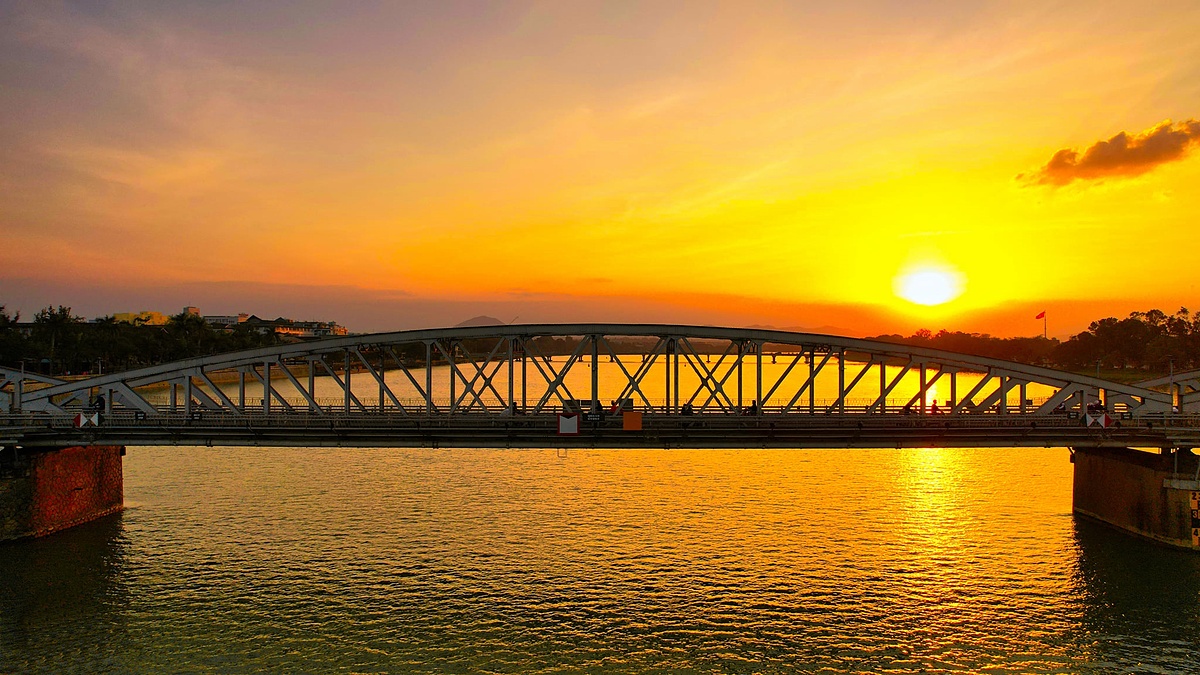 |
|
Truong Tien Bridge spanning across the Huong River at sunset. Photo by VnExpress/Duc Hieu |
Located in downtown Hue, the Truong Tien Bridge spans the Huong River and has become a tourism spot in the former imperial capital. Its two pedestrian lanes make it popular among local health enthusiasts who can jog across while enjoying the beautiful scenery.
One experience that tourists should try is to cycle to the bridge and catch the sun setting over the Huong River. They can also rent boats to the Thien Mu Pagoda, one of the oldest spiritual sites in Hue.
- Reduce Hair Loss with PURA D’OR Gold Label Shampoo
- Castor Oil Has Made a “Huge” Difference With Hair and Brow Growth
- Excessive hair loss in men: Signs of illness that cannot be subjective
- Dịch Vụ SEO Website ở Los Angeles, CA: đưa trang web doanh nghiệp bạn lên top Google
- Nails Salon Sierra Madre
 VnExpress News The News Gateway of Vietnam
VnExpress News The News Gateway of Vietnam

